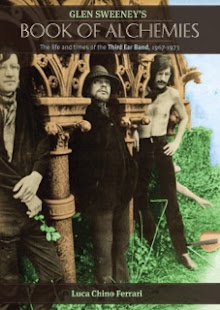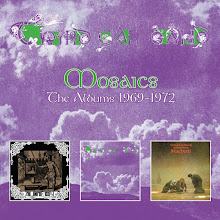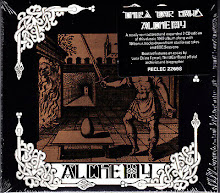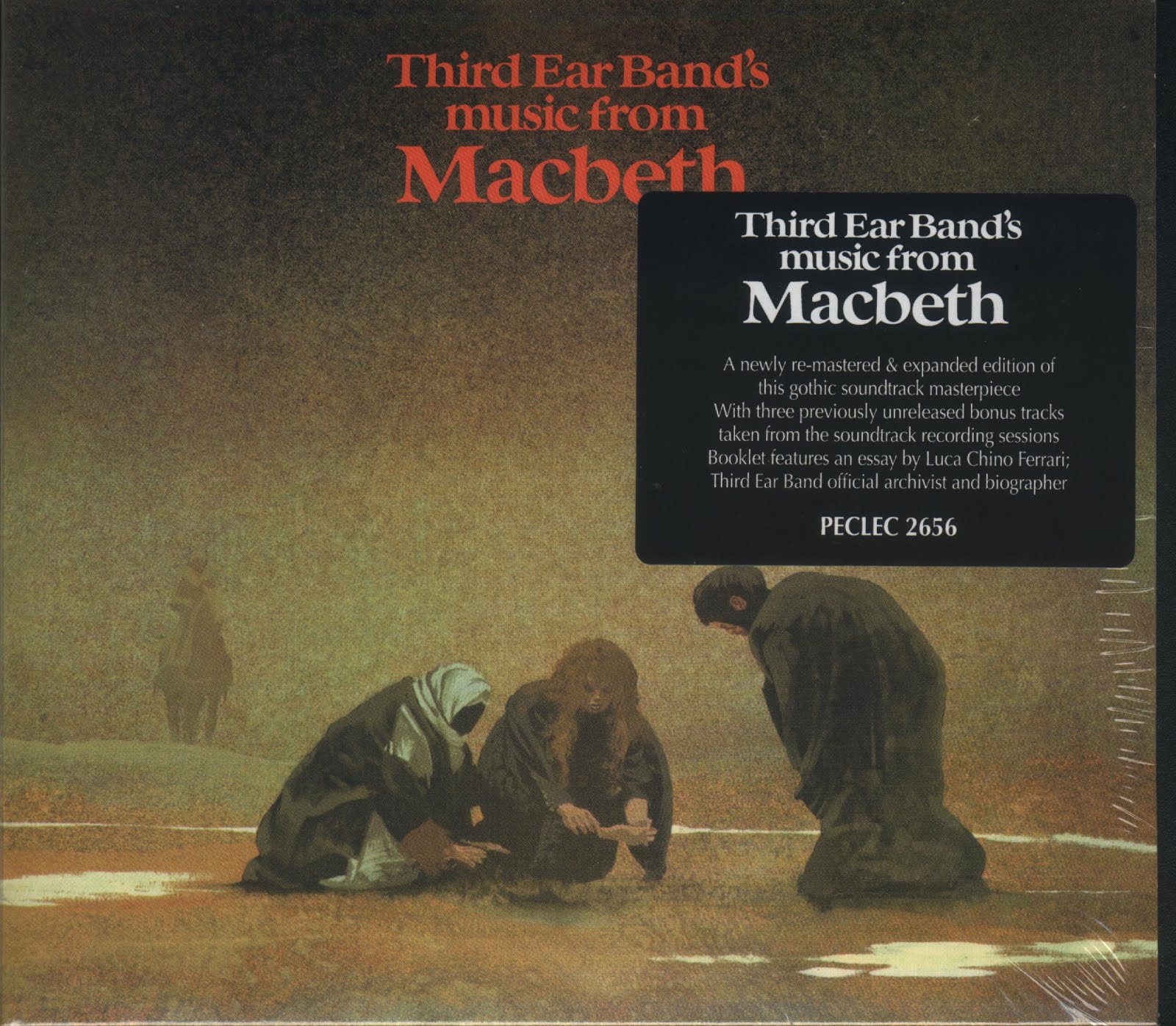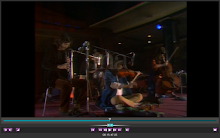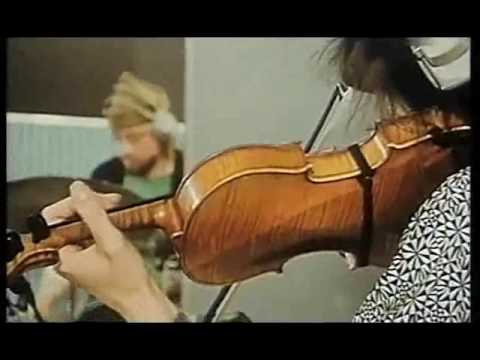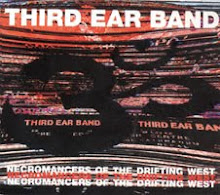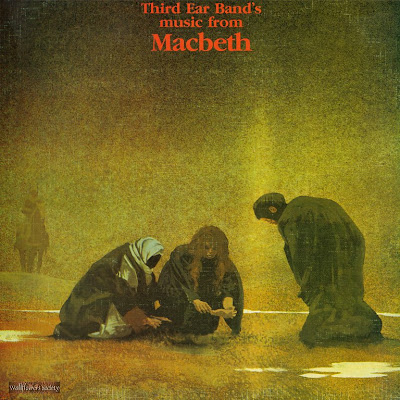I
try here a band line-ups chronology based on some sources: Paul Minns'
diary; my book "Necromancers of the drifting West" (Stampa Alternativa,
1997); Rod Goodway and Terry Day Web sites; Glen Sweeney's interview on
"Unhinged" (1990); interviews/memories with/of Ursula Smith, Steve Pank, Dave Tomlin, Clive Kingsley, Denim
Bridges, Rod Goodway, Simon House, Morgan Fisher, Lyn Dobson, Mick
Carter, Carolyn Looker, Paul Buckmaster, Brian Meredith, Brian Diprose.
This visual line-up can be related to the TEB chronology post in this archive at http://ghettoraga.blogspot.com/2010/02/after-attempt-to-make-complete-list-of.html
The Giant Sun Trolley (June 1966-Spring 1967)
Glen Sweeney (hand drums), Dave Tomlin (flute, sax), Roger Bunn (bass)
The
trio played mainly in London, the most important was the appearance at
the legendary "14th Hour Technicolor Dream" (April 29th, 1967). According Dave Tomlin (2010), sometimes played with the band also Dick Dadem (trombone).
Dave Tomlin (1967)
The Hydrogen Jukebox #1 (Spring-Summer 1967)
Glen Sweeney (drums), Clive Kingsley (electric guitar), Barry Pilcher (sax), Dick Dadem (trombone)
Very few concerts played mainly in London.
A rare shot of Glen Sweeney on stage with The Hydrogen Jukebox in 1967.
The (Electric) Third Ear Band #1 (Autumn 1967-June 1968)
Glen Sweeney (drums), Clive Kingsley (electric guitar), Paul Minns (oboe), Brian Meredith (electric cello)
According
Kingsley, this band played "a lot of gigs at Middle Earth, UFO Club.
Many other small clubs and a couple of concerts". (C. Kingsley, 2009)
Brian Meredith and Glen Sweeney on stage in 1967 (courtesy B. Meredith)
The Third Ear Band #2 (The National Balkan Ensemble) (July-December 1968)
Glen Sweeney (hand Drums), Richard Coff (violin), Paul Minns (oboe), Benjamin Cartland (viola)
The
band recorded three tracks sold and realised by Music Standard Library and one track for "Alchemy" album, never published ("Raga in D").
The National Balkan Ensemble a.k.a. TEB: (L-R) Minns, Cartland, Sweeney & Coff.
The Third Ear Band #3 (December 1968?)
Glen Sweeney (hand Drums), Richard Coff (violin), Paul Minns (oboe)
For
a short period the band became just a trio (with Carolyn as a muse). No
recordings and few concerts, just a photo session with photographer Ray
Stevenson at the Kensall Green cemetery of London.
L-R: Minns, Sweeney, Coff (ph. ©Ray Stevenson).
Third Ear Band #4 (December 1968-? Spring 1969)
Glen Sweeney (hand Drums), Richard Coff (violin), Paul Minns (oboe), Mel Davis (viola)
This line-up recorded all the edited "Alchemy" (Harvest 1969) tracks. In the studio, guest musicians was DJ John Peel (Jews harp) and Dave Tomlin (violin).
The Third Ear Band #5 (Spring-Summer 1969)
Glen Sweeney (hand Drums), Richard Coff (violin), Paul Minns (oboe), Paul Buckmaster (cello)
This line-up played just few live concerts, among these the famous Hyde Park free one.
Coff, Sweeney, Minns and Buckmaster at the "Tree Ceremony".
(L-R): Minns, Buckmaster, Sweeney and Coff at the Roundhouse (London) May 30th, 1969
The Third Ear Band #6 (Summer 1969-July 1970)
Glen Sweeney (hand drums), Richard Coff (violin), Paul Minns (oboe), Ursula Smith (violin)
This TEB line-up made many live concerts, TV and radio appearances. The group recorded "Third Ear Band "(Harvest 1970) and the TV soundtrack "Abelard & Heloise" (edited on CD in 1997 by Stampa Alternativa with Luca Ferrari's book "Necromancers of the drifting West").
(ph. ©Blackhill Enterprises Ltd.)
The Third Ear ('Big') Band (or Electric Earband) #7 (September 1970-July 1971)
Glen Sweeney (drums), Paul Minns (oboe), Paul Buckmaster (electric bass), Denim Bridges (electric guitar)
After
the acoustic phase, the idea was to form a 'pop band': this line-up
played various live concerts, some radio programmes, an album - never
realised - announced to the press as "The Dragon Wakes" and a single
titled "Mistress to the Sun", still in EMI vaults. Bridges has got six
unrealised tracks from it (read at http://ghettoraga.blogspot.com/2009/12/how-many-teb-unrealized-tracks-left.html ), Luac Ferrari just one ("Raga #1").
(ph. ©Blackhill Enterprises Ltd.)
The same line-up, with congas player
Gasper Lawal as guest musician (see below), on September 1970 played two set live in the studio in Bremen (Germany) for the TV programme "Beat Club". A DVD from it was realised in 2011 by English Gonzo Multimedia (read at
http://ghettoraga.blogspot.com/2011/11/lost-broadcasts-dvd-review.html ).
The Third Ear ('Big') Band #8 (January 1971)
The Third Ear Band #9 (July 1971-February 1972)
Glen Sweeney (drums), Paul Minns (oboe), Paul Buckmaster (electric bass), Denim Bridges (electric guitar), Simon House (violin)
The band, formed to record "Macbeth" soundtrack (Harvest 1972), played also some few live gigs.
A rare TEB photo from Japanese magazine "Tokyo Tim" (1972?).
TEB recording "Macbeth" from a magazine cut with Sweeney handwritten notes.
The Third Ear Band #10 (March 1972-? 1972)
Glen Sweeney (drums), Paul Minns (oboe), Simon House (violin), Mike Marchant (electric guitar), Peter Pavli (electric bass)
Despite some rehearsals, this band never played live.
The Third Ear Band #11 (December 1972)
Glen Sweeney (drums), Paul Minns (oboe, recorders & hammond), Mike Marchant (electric guitar & vocals), Simon House (electric violin, VCS3 & piano), Dave Tomlin (bass)
This line-up, 'pop' oriented, recorded "The Magus" (with engineer Ron Kort at percussion and doom piano) just in five days. The record will be realised by Angel Air just many years later (2004).
The Third Ear Band #12 (December 1972-January 1973)
Glen Sweeney (drums), Paul Minns (oboe), Mike Marchant (electric guitar & vocals), Morgan Fisher (VCS3)
According to Fisher (2009), this line-up (probably with a bass player in) played just "two radio shows and one gig" in North London....
The Third Ear Band #13 (January 1973)
Glen Sweeney (drums), Paul Minns (oboe), Mike Marchant (electric guitar & vocals), Simon House (electric violin, VCS3)
With this line-up, TEB played at least a concert at the "Arts Theatre" of Cambridge on January 23th, 1973 (as documented by a poster).
The Third Ear Band #14 (1976)
Glen Sweeney (drums), Paul Minns (oboe), Mick Carter (electric guitar), Terry Haxton (bass and keyboards), Gary Heath (synthetiser)
Some weeks of rehearsals but never played live.
The Third Ear Band #15 (Spring-July 1977)
Glen Sweeney (drums), Paul Minns (oboe), Rod Goodway (guitar & vocals), Mick Carter (electric guitar)
As Rod Goodway remembers in his Archive, this line-up made some rehearsals, very few live concerts and radio appearances.
Third Ear Band #16 (June 1978)
Glen Sweeney (drums), Paul Minns (oboe), Mick Carter (guitar), Marcus Beale (violin), Brian Diprose (bass)
Rehearsals but very few live concerts (among these, on June 4th, at "Roundhouse Downstairs Theatre" of London).
Third Ear Band # 17 (or Hydrogen Jukebox #2) (1978)
Glen Sweeney (drums), Mick Carter (electric guitar), Brian Diprose (bass), Jim 'Gipsy' Jones (electric guitar and vocals)
This line-up recorded a pop album titled "Apocaliptic Anthems". It would be published just in 1991 by Italian Materiali Sonori as "Prophecies" . According Brian Diprose the band was actually a new line-up of the Third Ear Band. Only in 1991 Glen Sweeney and Mick Carter decided to publish the record as Hydrogen Jukebox...
L-R: Brian Diprose, Jim Jones, Mick Carter, Phil Shaw (recording engineer), Glen Sweeney.
Third Ear Band #18 (August 1988-September 1988)
Glen Sweeney (hand drums), Paul Minns (oboe), Mick Carter (electric guitar and effects), Allen Samuel (violin)
The
band, after a month of rehearsals in London on August 1988, played live
in Italy on September 8th (Bergamo) and 9th (Umbertide, Perugia).
From the first concert Materiali Sonori published the live album "Live Ghosts".
TEB on stage at Umbertide festival on September 9th, 1988.
Third Ear Band #19 (December 1988-May 1989)
Glen Sweeney (hand drums), Mick Carter (electric guitar and effects), Lyn Dobson (saxes and flute), Ursula Smith (violin)
After
a three dates tour programmed in December 1988, cancelled owing to
Sweeney' unexpected personal problems, this band played on the second
Italian tour with concerts at Sarzana, Genova, Bergamo and Piacenza.
From the Sarzana gig the limited edition cassette "New Forecasts from the Third Ear Almanac" (ADN Records 1989).
Between March and May the band recorded a new, never published album, titled "Spirits" (or "Magic").
L-R: Sweeney, Dobson, Smith and Carter in Bergamo (photo: ©G. Bresciani).
Third Ear Band #20 (July 1989)
Glen Sweeney (hand drums), Mick Carter (electric guitar and effects), Lyn Dobson (saxes and flute), Allen Samuel (violin)
This
line-up played just a live concert at Vinci (near Florence) on July 8th. In that occasion Materiali Sonori managed a proper photo session
ran by photographer Lucia Baldini.
TEB (L-R: Allen, Sweeney, Dobson, Carter) at the Da Vinci's museum (photo: ©Lucia Baldini).
Third Ear Band #21 (October 1989-August 1990)
Glen Sweeney (hand drums), Mick Carter (electric guitar and effects), Lyn Dobson (saxes and flute), Neil Black (electric violin)
Line-up of the third Italian tour (concerts in Gorizia and Bergamo).
After
some rehearsals recorded (the unrealised "Necromancer Suite"), the
group recorded a second album at the Alchemical Studios titled "Magic
Music" (Materiali Sonori 1990). On December 15th also a concert in
London. On February 1990 new Italian tour with gigs in Rieti (3th),
Rome (4th), Milan (5th), Florence (6th), Genova (7th), Meda (9th) and
Longiano (10th).
L-R: Lyn Dobson, Mick Carter (rear), Glen Sweeney, Neil Black (rear) (photo: ©C. Looker).
(Elektrik) Third Ear Band #22 (March-August 1991)
Glen Sweeney (hand drums), Mick Carter (electric guitar and effects), Neil Black (violin), Barry Pilcher (saxes)
A
short life for a line-up that recorded some tracks for a projected new album
("Song of Gaia" will remain unrealised)... Few live concerts in Italy (one
documented in Sardinia) and London.
Barry Pilcher and Glen Sweeney in Glen's Sheperd's Bush flat in 1991 (photo: ©C. Looker).
Third Ear Band #23 (September 1991-September 1992)
Glen Sweeney (hand drums), Mick Carter (electric guitar and effects), Lyn Dobson (saxes and flute), Neil Black (electric violin)
The last TEB line-up ever. Recorded "Brain Waves" for MaSo (published on 1993) and played few concerts in England and Italy (Rome, Bergamo, Naples, Mantova).
no©2010 Luca Ferrari
(Last update on June 16the, 2016)

























.jpg)














